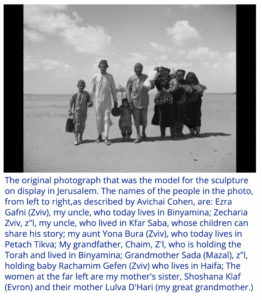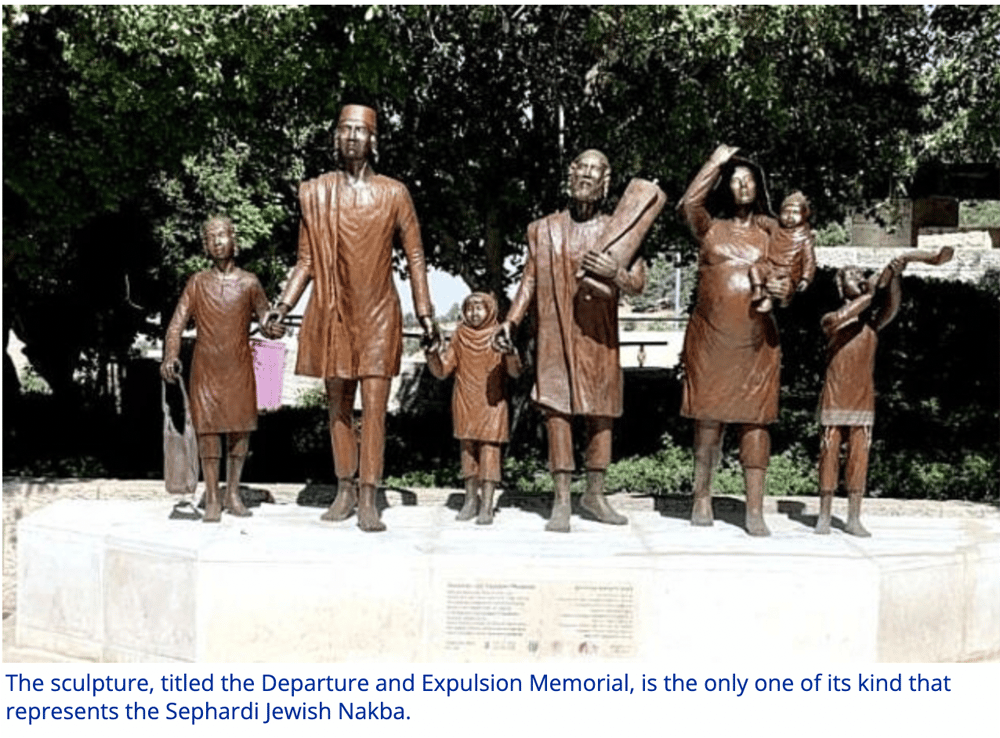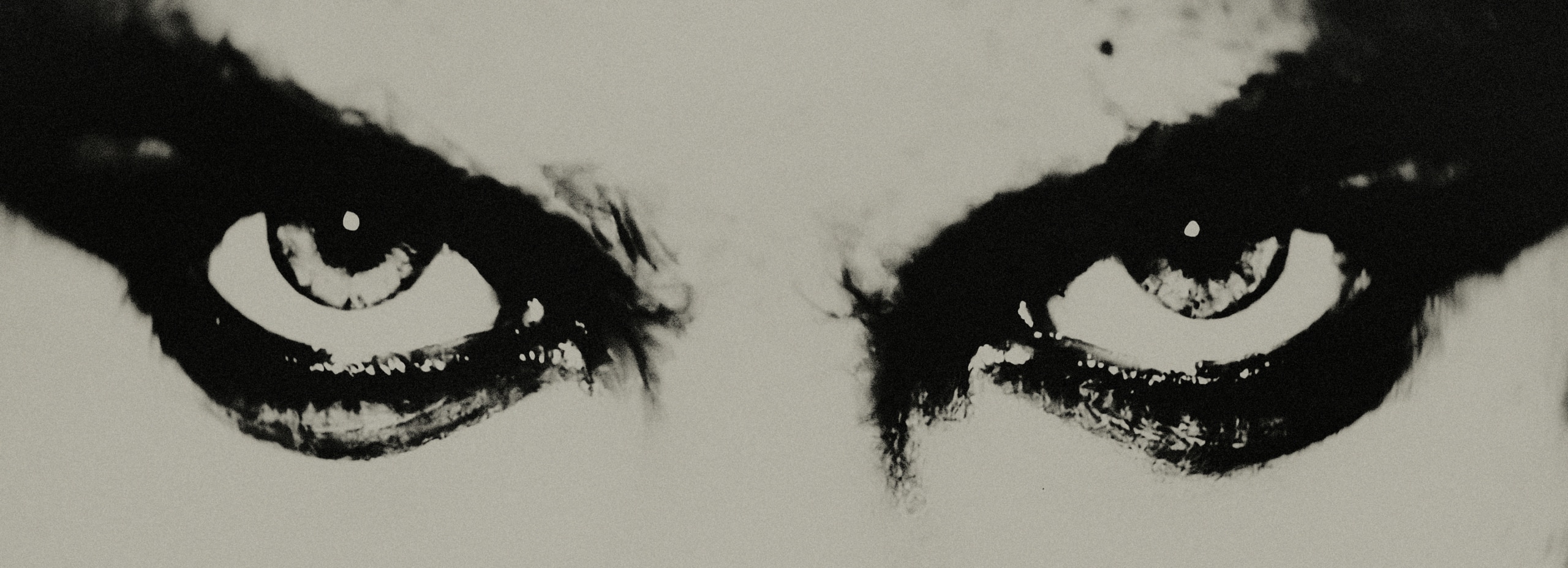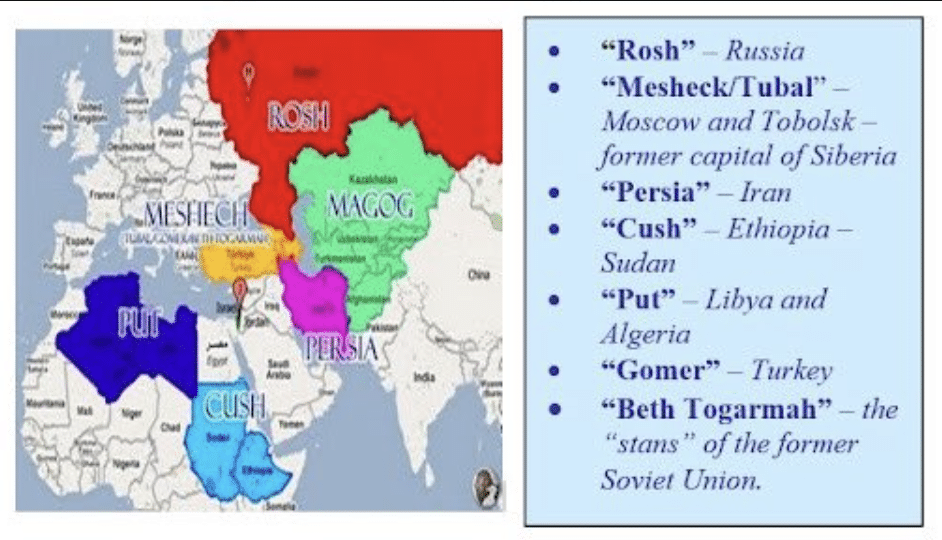The expulsion of Jews from Arab countries was one of the biggest humanitarian crises of the 20th century, but it is hardly recognized or acknowledged by the world.
Edited by Christine Darg for Jerusalem Channel
The Arabic word Nakba means “catastrophe” and is used by Palestinian Arabs to describe the founding of the State of Israel, but the Jews suffered their own Nakba in Arab and Persian lands when more than 800,000 Jews were driven out of their centuries-old Mideast communities.
Now a new sculpture memorial, titled the Departure and Expulsion Memorial, is the only one of its kind to represents the Sephardi Jewish “Nakba.”
The sculpture follows the theme of a long-overdue Knesset Law passed in 2014, which requires the teaching of the expulsion of the Jews from Arab lands around the time of the birth of Israel.
Until the 2014 Knesset law was passed, there was no annual formal recognition of the Sephardi/Mizrahi experience.
The sculpture on display outdoors at the Sephardi Memorial in Jerusalem was created by noted Jerusalem artist Sam Philipe from the picture of a Jewish family literally walking from Yemen to Israel.
 Jerry Klinger, president and founder of the Jewish American Society for Historic Preservation, published a portion of an email [at left] that he received from Avichai Cohen, whose mother’s family made Aliyah on foot from Yemen in 1948 and the family is pictured in the photo. In the photo Cohen’s grandfather, Mori Chaim Zviv, carries a Torah scroll. The photo was taken by a British soldier at the Hashd Camp, where the Yemenite Jews stopped en route to Israel.
Jerry Klinger, president and founder of the Jewish American Society for Historic Preservation, published a portion of an email [at left] that he received from Avichai Cohen, whose mother’s family made Aliyah on foot from Yemen in 1948 and the family is pictured in the photo. In the photo Cohen’s grandfather, Mori Chaim Zviv, carries a Torah scroll. The photo was taken by a British soldier at the Hashd Camp, where the Yemenite Jews stopped en route to Israel.
“During the life of my grandfather, now in his 90s, this photo was published in books about Aliyah, such as ‘Amud Haesh’ (‘Pillar of Fire.’) It became an icon of Zionism, a realization of its dream and its optimism, showing the passion and dedication of the Yemenite Jews to living in Israel,” Cohen told Klinger. “Because of this, it is important to me to honor my grandfather, Chaim Zviv, who brought his family through great difficulties and a strong spirit to Israel in order to realize the story of our heritage through many generations, and to respect the people in the photos who are still alive.”
Klinger recognized the importance of this piece of Jewish history and commissioned Philipe to make the sculpture from the photo. The sculpture is the first-ever permanent Memorial to the Jews from Arab countries and Iran, and is located on the Sherover Promenade adjacent to the Hass Promenade in Jerusalem.
The Jewish American Society for Historic Preservation conceived and funded the Memorial with support from the City of Jerusalem, the World Sephardi Federation and the Jerusalem Foundation.
“I aim to tell the authentic experiences, or witness through these icons the memory, similar to the well-known photo of the Paratroupers at the Kotel in 1967, who are remembered during that event and after,” said Cohen. “I want to share their stories, and to give credit where due to these images in the photo.”
Klinger saw the opportunity to honor Cohen’s wish through this sculpture.
In his Times of Israel blog, Klinger wrote, “The Departure and Expulsion Memorial, the Jewish Nakba Memorial, may be the most important. It is more than for memory. It is a tool for the defense of Israel.”








Leave A Comment